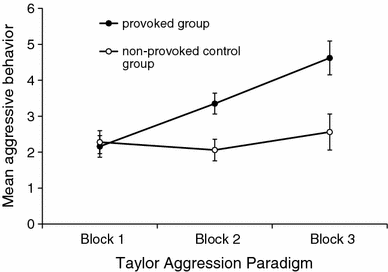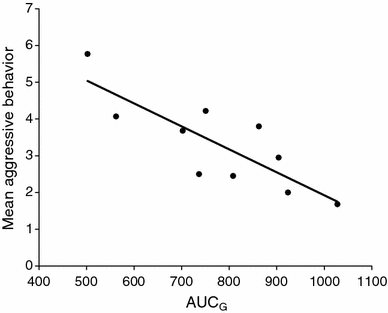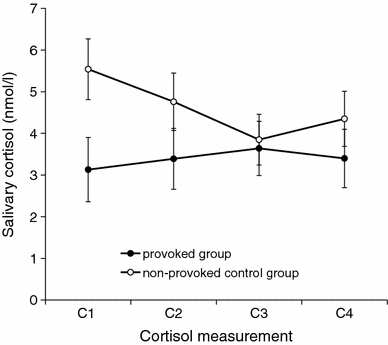The relationship between basal and acute HPA axis activity and aggressive behavior in adults
- PMID: 20333417
- PMCID: PMC2858274
- DOI: 10.1007/s00702-010-0391-x
The relationship between basal and acute HPA axis activity and aggressive behavior in adults
Abstract
The hypothalamic-pituitary-adrenal (HPA) axis seems to play a major role in the development, elicitation, and enhancement of aggressive behavior in animals. Increasing evidence suggests that this is also true for humans. However, most human research on the role of the HPA axis in aggression has been focusing on highly aggressive children and adolescent clinical samples. Here, we report on a study of the role of basal and acute HPA axis activity in a sample of 20 healthy male and female adults. We used the Taylor Aggression Paradigm to induce and measure aggression. We assessed the cortisol awakening response as a trait measure of basal HPA axis activity. Salivary free cortisol measures for the cortisol awakening response were obtained on three consecutive weekdays immediately following awakening and 30, 45, and 60 min after. Half of the subjects were provoked with the Taylor Aggression Paradigm to behave aggressively; the other half was not provoked. Acute HPA axis activity was measured four times, once before and three times after the induction of aggression. Basal cortisol levels were significantly and negatively related to aggressive behavior in the provoked group and explained 67% of the behavioral variance. Cortisol levels following the induction of aggression were significantly higher in the provoked group when baseline levels were taken into account. The data implicate that the HPA axis is not only relevant to the expression of aggressive behavior in clinical groups, but also to a large extent in healthy ones.
Figures



References
-
- Aiken LS, West SG. Multiple regression: testing and interpreting interactions. Newbury: Sage; 1991.
-
- Alink LR, van Ijzendoorn MH, Bakermans-Kranenburg MJ, Mesman J, Juffer F, Koot HM. Cortisol and externalizing behavior in children and adolescents: mixed meta-analytic evidence for the inverse relation of basal cortisol and cortisol reactivity with externalizing behavior. Dev Psychobiol. 2008;50:427–450. doi: 10.1002/dev.20300. - DOI - PubMed
-
- Anderson CA, Bushman BJ. External validity of “trivial” experiments: the case of laboratory aggression. Rev Gen Psychol. 1997;1:19–41. doi: 10.1037/1089-2680.1.1.19. - DOI
-
- Baron RA, Richardson DR. Human aggression. New York: Plenum Press; 1994.
Publication types
MeSH terms
Substances
LinkOut - more resources
Full Text Sources
Medical

